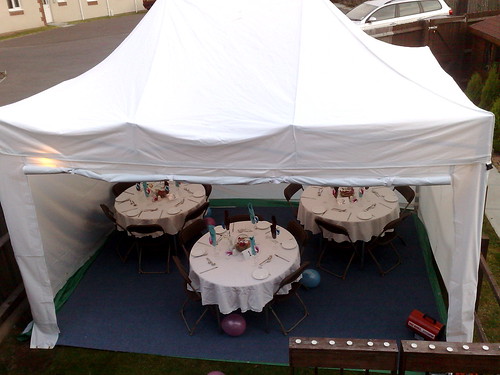
Ants are generally a big nuisance. They get into your sugar bowl; they readily collect where there’s a spattering of juice; and they spoil your favorite desserts. Ants – you really don’t want them inside your home; but what about outdoors? Well, they’re outside, so leave them be, right? If you are an avid gardener, you know that ants are tiny machines of destruction. They can readily destroy your most prized plants and infest your lawn to the point that you can no longer have picnic outdoors or have your kids play in your backyard.
Ants Create Numerous Mounds
So, how can ants wreck your yard? To start with, allowing an ant colony to firmly establish itself in your yard or lawn is not a good idea because these insects can easily overrun your space in a matter of weeks. If you don’t pay attention to your ant problems, you could end up staying indoors all the time. You won’t like to go outside and enjoy your plants because as soon as you step onto your yard, you might accidentally tread on one of their mounds. That’s not a pretty picture, especially if you’ve just disturbed a large group of red fire ants. These kinds of ants won’t just crawl all over you; they’ll bite you – and a fire ant’s sting is painful and very itchy. So, instead of being able to enjoy your garden, you would think twice about venturing outdoors in case you step on one of their mounds. What if you have kids? You certainly wouldn’t want your children playing in a yard crawling with fire ants. In addition to this, mounds are unsightly and they affect plant growth and development.
Ants Sting
As mentioned, ants sting when disturbed. The injury is typically itchy, inflamed and painful. Sometimes, minute pustules or blisters form on the site of the bite. Although ant bites readily resolve in time, some people are hypersensitive. It is also exceedingly rare for fire ants to attack humans. They usually just sting when they are bothered. However, there have been exceptional instances when fire ants have harmed people. Babies, the elderly and incapacitated individuals could be target of ant attacks, particularly if there is an extensive infestation in a specific area.
Ants Could Kill Plants
Are your prized orchids swarming with black ants? Have you noticed that your zinnias are failing to bloom because the buds are teeming with ants? Are your dahlias no longer blooming? Many kinds of ants are attracted to the sweet nectar produced by flowers. Some people say that ants are harmless because they don’t eat flowers. Well, this may not be entirely true. Based on my experience, the black ants that swarmed all over my beautiful ground orchids also brought with them lots of aphids. Ants farm these creatures because they eat the honeydew produced by aphids. Aphids cover stems or leaves, and they deter plants from absorbing sunlight. Black mold also form on the parts that also get coated in honeydew, which further prevents sunlight absorption.
In addition to farming and protecting aphids, ants affect plants’ root systems too. These insects don’t eat roots, but they damage these when they burrow or create tunnels under the ground. Ants’ underground activities pull the soil away from the roots which means that these won’t be able to absorb water well.
Citations:
Attached Images:
- License: Creative Commons image source
Claire Brent is a freelance blogger who often writes about pest management. She covers many issues, including termite and ant control, diseases caused by insects, green pest control methods, and other pest-related issues. She also provides material for Preventive Pest, a company that provides solutions to difficult pest problems.



